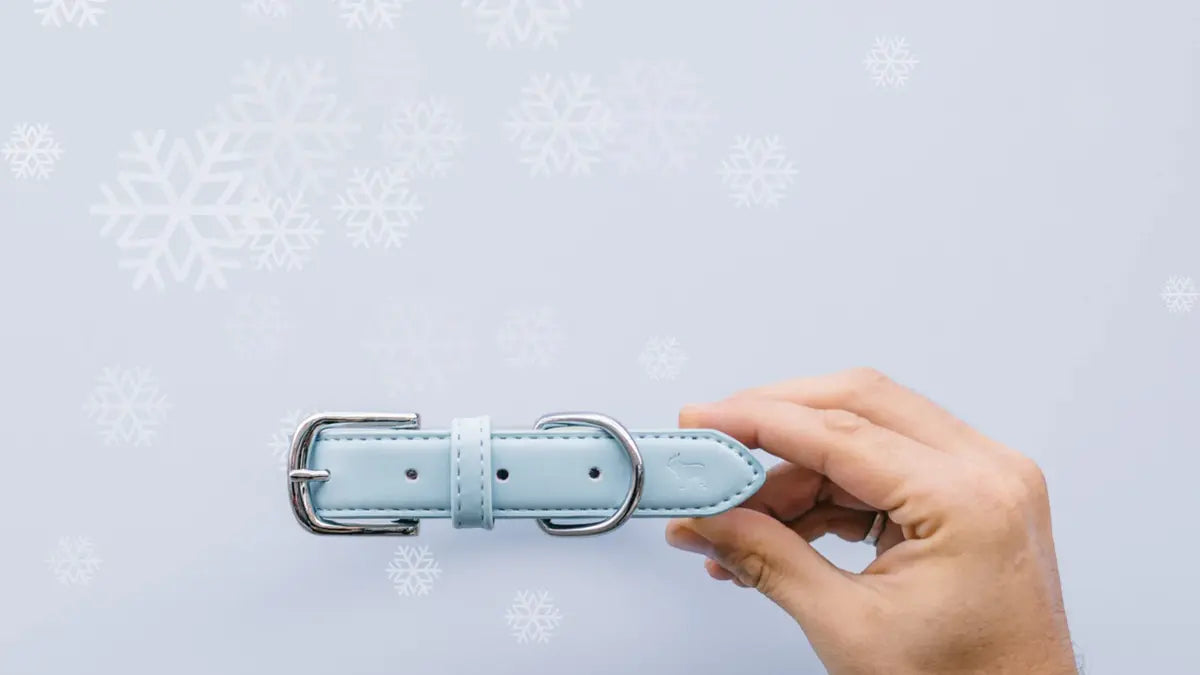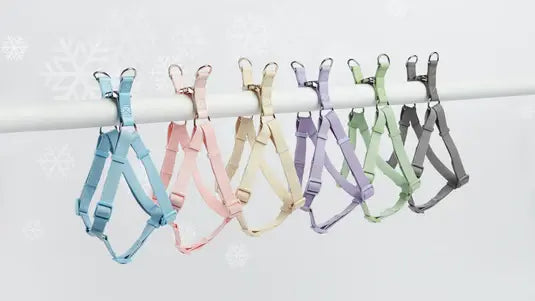FREE UK DELIVERY ON ORDERS OVER £39.99
Walking is a huge part of daily life with a dog, and making sure they have a comfortable and well fitting collar or harness is important to keeping them happy and healthy. But have you ever found yourself wondering if one is better than the other?
Collars have been a staple among the dog accessory world for many many years, providing a simple and effective way of securing a lead to your dog while also signifying that they are not a stray and likely have an owner who loves them. But over the years more and more dogs can be found strutting the streets with their lead attached to a harness instead. So when it comes to clipping on your lead and heading out for a walk, which one is better?

The main difference between the two is simple: a collar fastens around the dog's neck, typically with a buckle or clasp, whereas a harness covers a wider surface area (the chest, shoulders, and upper back). Both can often be adjusted to ensure a secure and comfortable fit, and they can now be found in various different colours and styles to suit your aesthetic desires, so if like us you love to switch up your accessories, there are plenty of options to choose from.


Best suited for dogs who already walk well on a lead, they’re possibly the most common style you’ll see, featuring a D-ring that sits along the centre line of the dog’s back. But if your dog isn’t the calmest when walking on a lead, this style may not be the right choice as it won’t discourage your dog from pulling (and may make pulling worse).
Opposite to the above, this style of harness allows you to clip the lead to a D-ring placed on the dog’s chest. They are great if your dog has a tendency to pull, as the front clip changes the point of leverage - when pulling occurs the tension on the lead draws the dog back towards you.
A harness with both front and back clip is known as a ‘dual clip harness’ - commonly slightly bulkier in fit so they may take a while to get used to, they’re a great training tool for dogs who pull and can provide you with slightly more control.
The front of this style of harness looks like the letter Y, hence the name, and when fitted correctly it can provide greater freedom of shoulder movement for your dog while out and about. The ‘Y’ should sit on the dog's sternum - if it’s sitting too high it can damage the neck, just like a collar, but if it’s sitting too low it can interfere with their natural gait.
Perfect if your dog dislikes having things go over their head, and commonly paired with a Y shape and a back clip. Lay it flat on the ground and step your dog’s front paws into the two loops, then lift the straps up and fasten around your dog’s back.
The short answer is, yes. There are some breeds where it is truly recommended to always opt for a harness over a collar, because walking on a collar can cause them severe pain or damage.
Brachycephalic breeds, and also Toy breeds, tend to have narrow airways so using a collar can really limit the amount of air that gets through if too much pressure is applied.
These breeds include, but are not limited to;
If you’re anything like us, we’re pretty sure you are always going to want the best for your four-legged friend, so taking time to consider which walking aid is suited to them is important.
By using the right one you can help to prevent any unnecessary injuries from happening and reduce any strain or pressure on sensitive areas, ensuring you are always prioritising the health and happiness of your pup and making walks enjoyable and safe for both of you. If you’re really unsure, or want a little more guidance then you can always speak to your vet to get a medical professionals opinion based on your dog’s overall health needs.
It can actually be really useful to familiarise your pup with a harness and a collar as they are both valuable tools when it comes to training. It’s important for them to wear a collar for identification purposes, but a harness can be a great starting point when training them to walk nicely on a lead due to the boundless amounts of energy they have (make sure you’re also armed with lots of tasty treats to keep their focus and reward the behaviours you want to see).





Never miss a treat!
Subscribe to our newsletter and get blog articles amongst other treats delivered to your inbox

Comments (2)
I have a small but very sturdy and strong lurcher. I have used a sighthound recommended harness but she absolutely hates it. I’ve found a well fitting martingale collar the best option because sighthounds have a tendency to be able to ‘back out’ of their collars, which my lurcher would do if spooked. I have found the the martingale to be the best option for us.
I use a harness on my English Bull Terrier with a front D link
Leave a comment